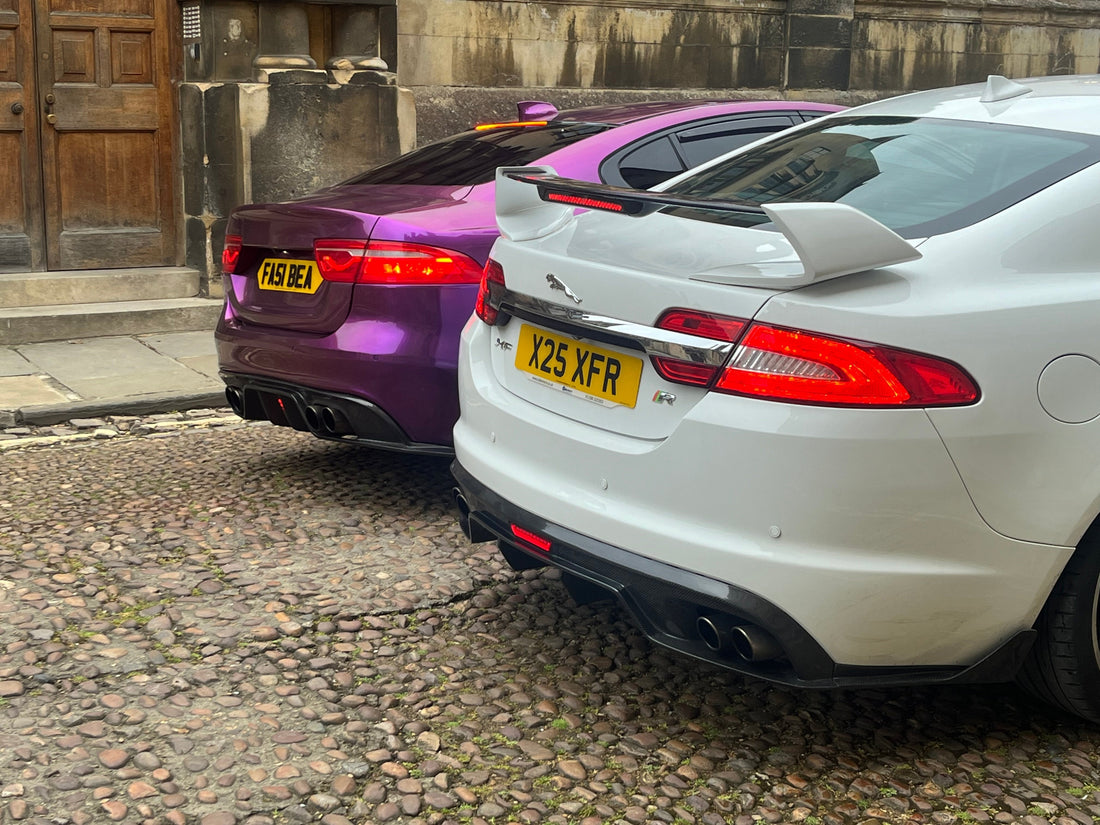Aftermarket kits and parts are more than exterior visual pieces that turns heads, they are products that are scientifically proven to increase performance on your automotive vehicular machine. You have seen the effects with professional NASCAR. NASCAR vehicles have rear diffusers, weight reduction and pure ponies under the hood. F1 takes weight reduction, aerodynamics and spoilers to the pinnacle of technology.
Whether you're chasing lap times or just love how performance vehicles handle, understanding how rear spoilers and lip kits influence downforce opens a door to the world of applied physics. Let’s dive into how aerodynamic design reshapes airflow, adds stability, and ultimately enhances performance.
1. Aerodynamic Basics: Pressure vs. Velocity

At the core of aerodynamic force is Bernoulli’s principle—the idea that faster airflow causes lower pressure. When air is accelerated over and under a car's surfaces, pressure differences are formed. This difference creates downforce when managed correctly [1].
Spoilers essentially act as inverted wings, interrupting and reshaping airflow to create higher pressure above and/or lower pressure below the car's rear, pushing the vehicle downward onto the road [2][3].
2. Spoilers and Lip Kits: How They Work

A simple trunk lip spoiler forms a high-pressure wedge at the rear edge of a car. This reduces rear-end lift and sometimes creates slight downforce. Some studies show lift coefficient reductions of up to 95%, with only about a 2% increase in drag [4].
Meanwhile, adjustable race spoilers can dramatically increase rear downforce. One study found that a 10 cm spoiler at 0° angle on a fastback-style vehicle achieved an ideal performance trade-off [5]. On the Aston Martin DB7, optimal downforce was reached with the wing set at 5° and positioned 1850 mm behind the car’s centerline [6].
3. Wake Taming & Pressure Recovery
Photo Credit: (Bappa, 2015)
Cars generate a turbulent wake behind the vehicle. Regions of chaotic air that disrupt aerodynamic efficiency. Spoilers help tame this wake, promoting smoother pressure recovery and reducing drag [7]. Such Spoilers like the Jaguar F Type Active Spoiler Carbon Fibre SVR Style 2014 - 2020 – Vehicle Revolution have winglets at the end point of the spoiler to assist with reducing vortex even more.

Photo Credit: Aerospaceengineering.net
This effect is enhanced when combined with rear diffusers, which speed up the underbody airflow and assist in drawing air cleanly out from beneath the car [8].
Some Rear Diffusers that assist in airflow and chaotic air are Jaguar XF X260 Rear Diffuser Carbon Fibre Aspec 2016 - 2020 – Vehicle Revolution
4. Drag vs. Downforce: The Trade-off

Credit: Shelton, 2025
We see with 100 knots or 115 miles per hour or 185.2 kmph how the drag curve sees major advantages.
Every increase in downforce from a spoiler or lip kit comes with aerodynamic cost: increased drag. Air must be redirected, which reduces speed but improves grip.
Performance tuning is about balance. A 40/60 front-to-rear downforce split is often cited as optimal for race conditions [9].
5. Temperature and Air Density Effects
Environment plays a major role in aerodynamic behavior. Cold air is denser, providing more downforce because it holds more mass—and thus energy—per volume. Hot air, being thinner, reduces aerodynamic force [10].
Cooler air also boosts spoiler performance by increasing pressure differential, even if the spoiler shape remains unchanged [2].
And don’t forget tires: More downforce = more grip = more heat. Tires perform best within certain temperature ranges, so too much downforce can overheat them unless tuned correctly [5].
6. Putting It All Together: A Scientific Picture

Photo Credit: Semscale, 2024
Let’s break it down in steps:
- Airflow hits the spoiler or lip kit, splitting over and under.
- Air over the spoiler slows, increasing pressure.
- Air under or behind accelerates, reducing pressure.
- This creates a pressure differentia: generating downforce.
- Spoiler size, angle, and location tune the effect precisely.
- Colder air boosts this effect, while hotter air weakens it.
- The result is enhanced cornering, braking, and grip, even if drag increases slightly.
In Conclusion
Rear spoilers and lip kits do more than make a car look performance-ready. Spoilers and lip kits manipulate airflow to keep your tires glued to the road. Through pressure differentials, wake control, and environmental tuning, these aerodynamic elements play a critical role in speed, control, and safety.
Highlighted Vehicle Revolution Products that assist in creating downforce and controlling chaotic airflow
Jaguar F Type Active Spoiler Carbon Fibre SVR Style 2014 - 2020 – Vehicle Revolution
Alfa Romeo Giulia Quadrifoglio Body kit Upgrade QV Style Conversion fo – Vehicle Revolution
Citation References:
- Bernoulli’s Principle – NASA
- Study of Rear Trunk Lip Spoiler – MDPI PDF
- NASA Speed News: Spoilers & Wings
- Rear Trunk Lip Spoiler Study – ResearchGate
- Occam’s Racer: Spoiler Trade-off
- Aston Martin DB7 CFD Study – MDPI
- Wake & Pressure Recovery Study – IJSRET
- Wikipedia: Ground Effect & Diffusers
- Grassroots Motorsports: Aerodynamics Simplified
- Air Density vs. Downforce – Autosport Forum
- Drag and lower drag photo
- Boldmethod photo
- Semscale photo – Spoiler Interaction Semscale
- Winglet Effect photo – Aerospaceenginnering.net
- Turbulent Photo Bappa, 2015



